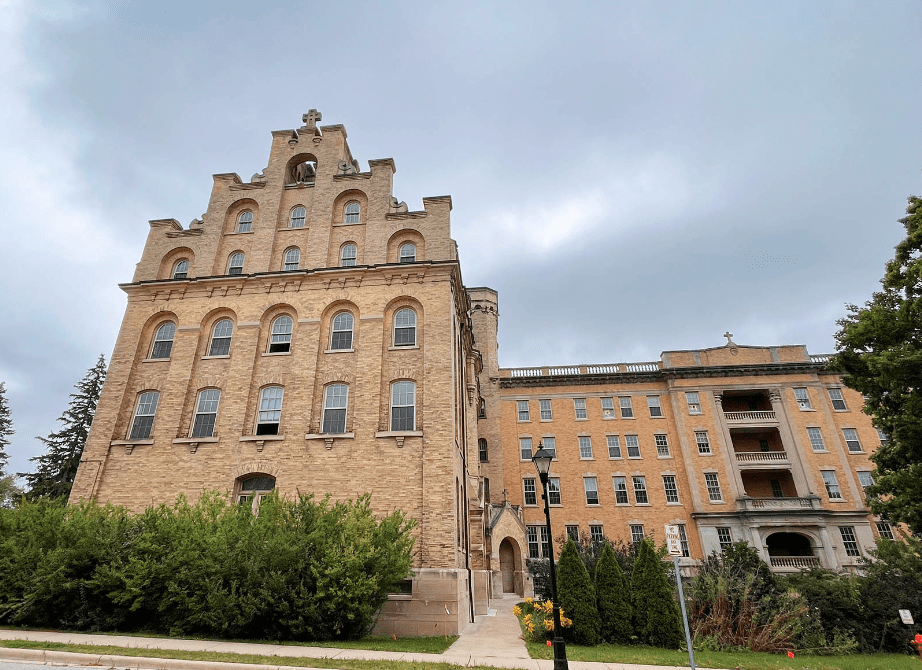
Article courtesy of OnMilwaukee
Passing through Elm Grove on Watertown Plank Road, you can’t miss the dramatic Notre Dame Hall designed by architect Eugene Liebert in 1898 for the School Sisters of Notre Dame, 13105 W. Watertown Plank Rd.
The cream city brick gem is topped with a striking stepped gable, a feature the architect would later incorporate into his 1905 mansion on 35th and Wisconsin for industrialist Henry Harnischfeger and again three years later on the palatial Lake Drive home (now razed) drawn for Albert O. Trostel.
Passing through Elm Grove on Watertown Plank Road, you can’t miss the dramatic Notre Dame Hall designed by architect Eugene Liebert in 1898 for the School Sisters of Notre Dame, 13105 W. Watertown Plank Rd.
The cream city brick gem is topped with a striking stepped gable, a feature the architect would later incorporate into his 1905 mansion on 35th and Wisconsin for industrialist Henry Harnischfeger and again three years later on the palatial Lake Drive home (now razed) drawn for Albert O. Trostel.
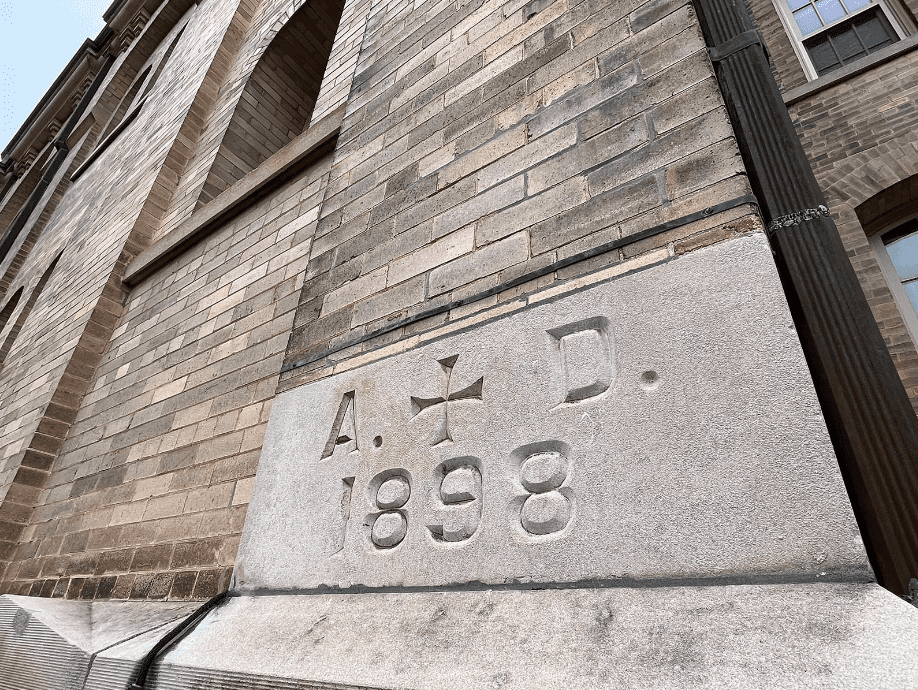
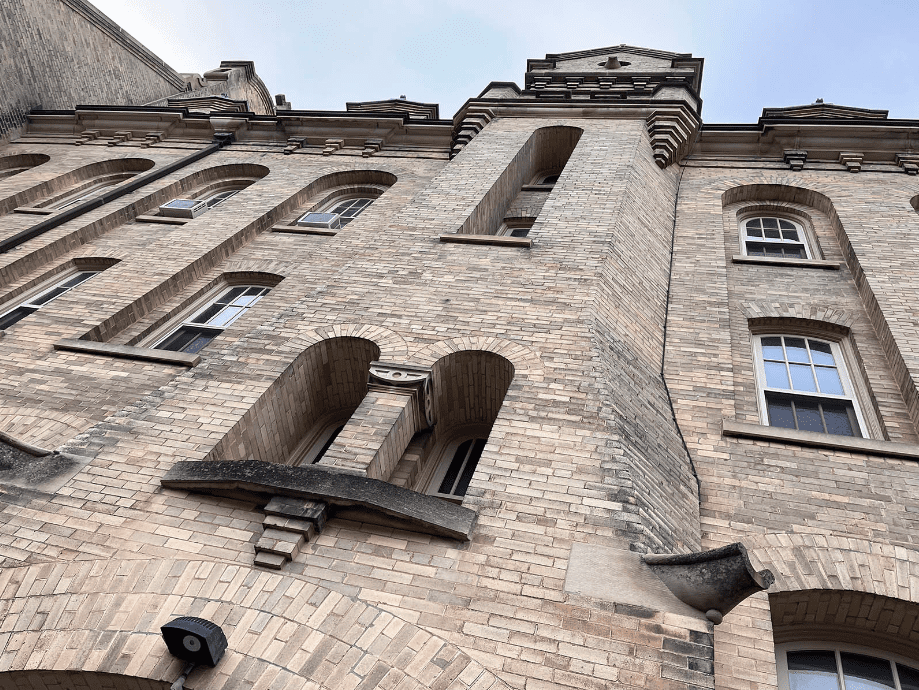
But there are also arches galore, corbeling, swooping verticle sections of masonry and other details, too.
Liebert’s building was soon followed on the site by a 1903 orphanage, on which architect Mark Pfaller recreated the stepped gable, and which got an addition 30 years later.
The sprawling complex on 30 acres was joined by a Prairie Style tuberculosis hospital called “The Bungalow” and boiler house in 1920 designed by Backes & Pfaller; the large Maria Hall, by the same architects the following year; the rustic Our Lady of Lourdes grotto in 1926; two wings of an infirmary, designed by Brust and Brust and Herbst, Jacoby and Herbst in 1955 and 1959, respectively; the residential Fidelis Hall in 1967; and the Holy Family Chapel, designed by Herbst, Jacoby and Herbst, in 1975.
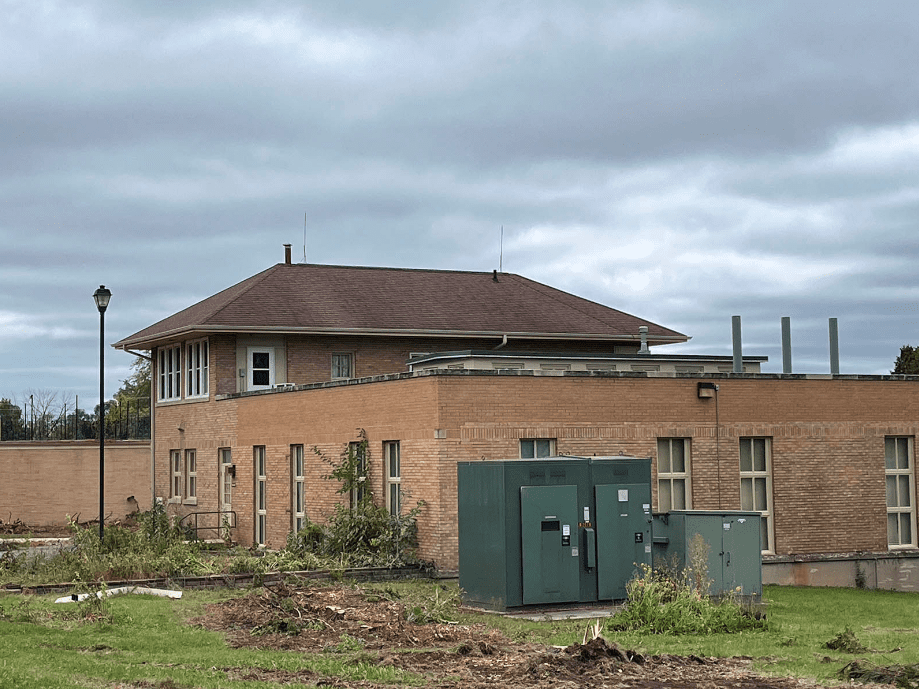
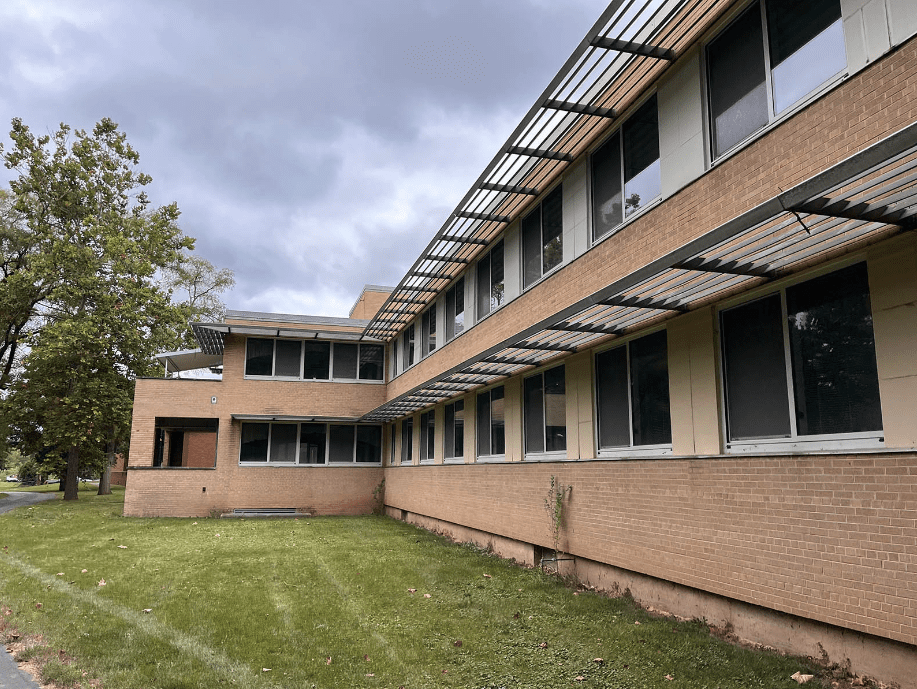
The campus also includes a cemetery that covers just over five acres.
The entire property – except the cemetery – was purchased by developers Mandel Group, who are keeping Liebert’s beautiful building and the attached Maria Hall, tearing down the rest and building three new buildings to create 237 apartments, including 35 large ones in the historic buildings.
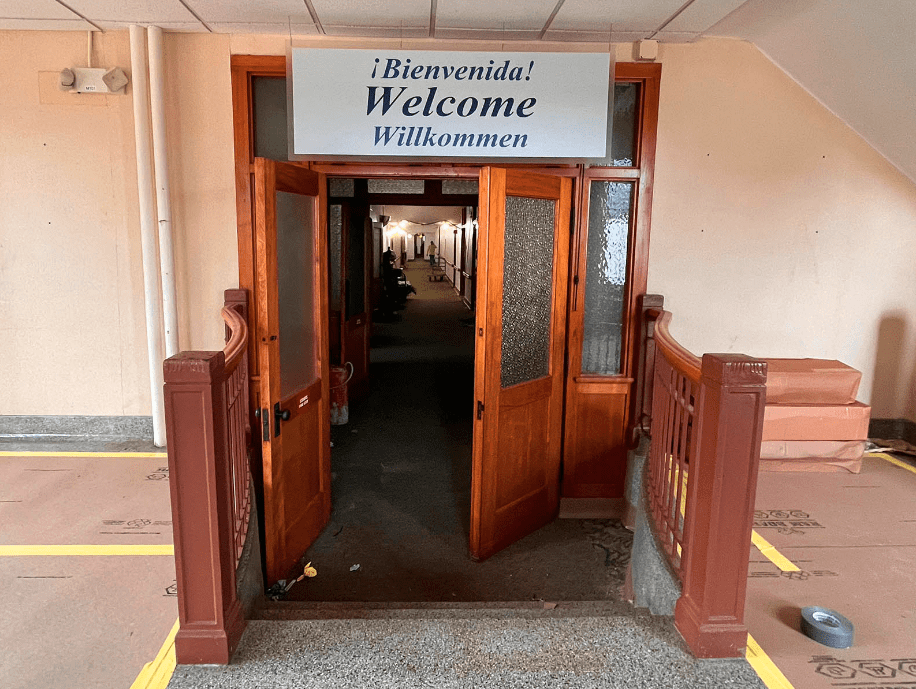
Engberg Anderson is the project architect.
Ten acres of the site are being sold to another developer that will build 21 single-family homes along the eastern edge.
The development will be called Caroline Heights, in honor of Mother Caroline Friess, who arrived in Wisconsin in 1848 and established the first North American Motherhouse of the School Sisters of Notre Dame in Milwaukee two years later.

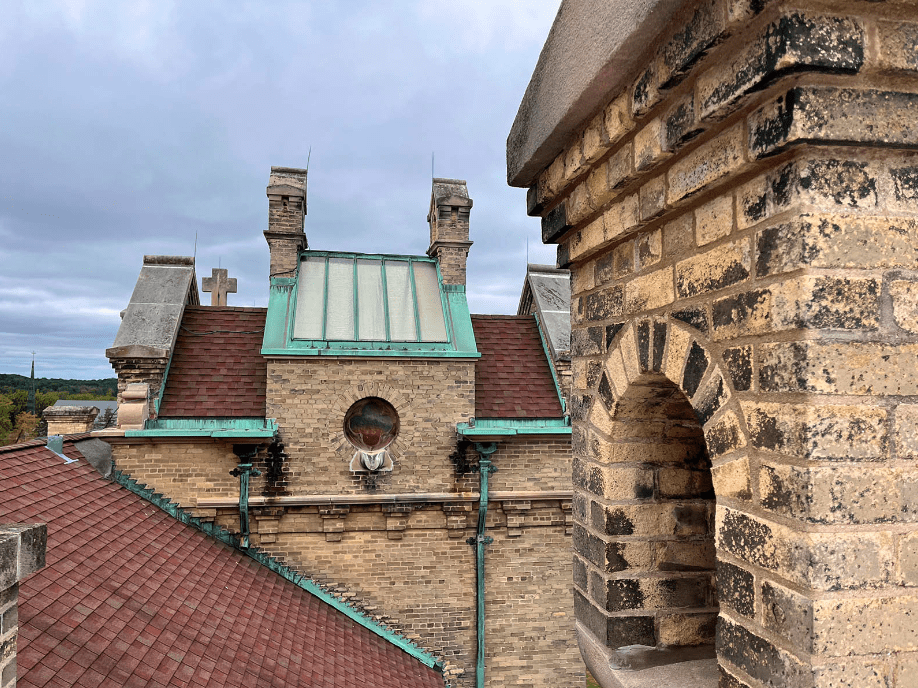
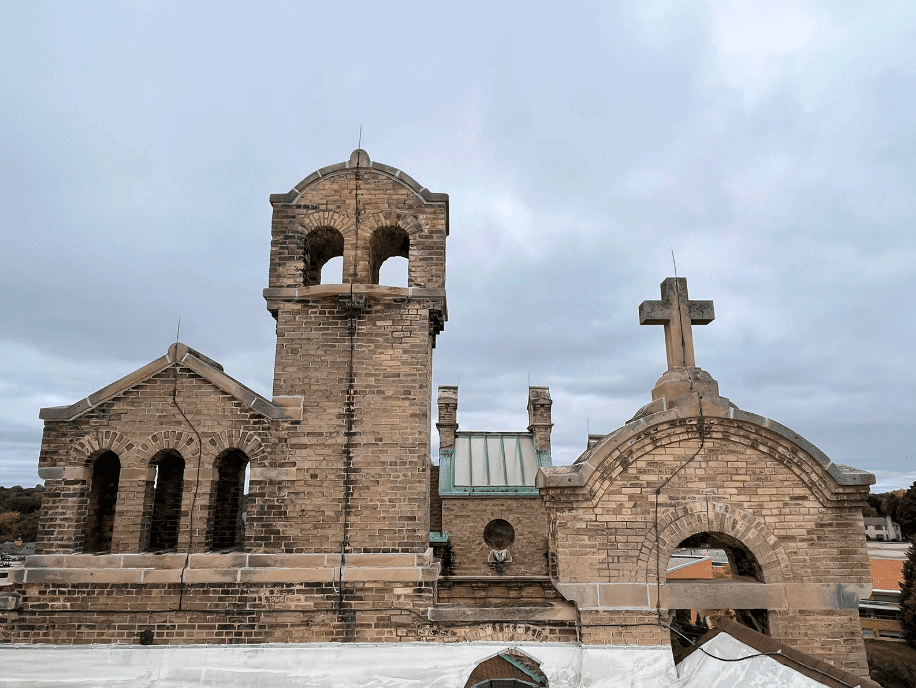
When Friess arrived, she was accompanied by fellow Bavarian, Mother Theresa of Jesus Gerhardinger, who founded the order, the mission of which is education. Mother Theresa decided that Milwaukee would become the locus of the order’s activities in the U.S.
Five years later, during a search for a suitable location, Friess selected the Elm Grove property as the site of a rest home for the sisters.
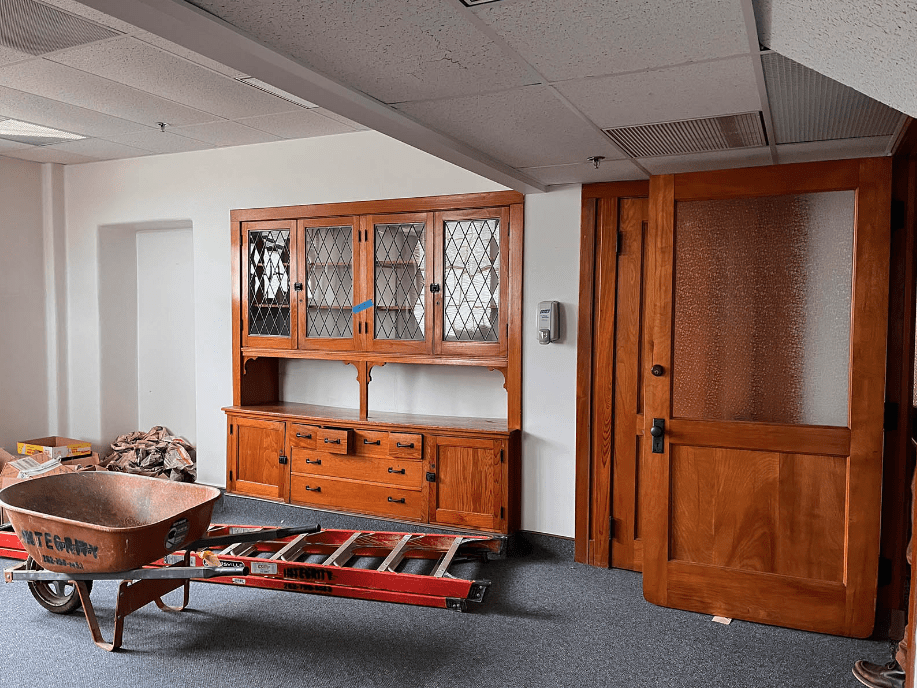
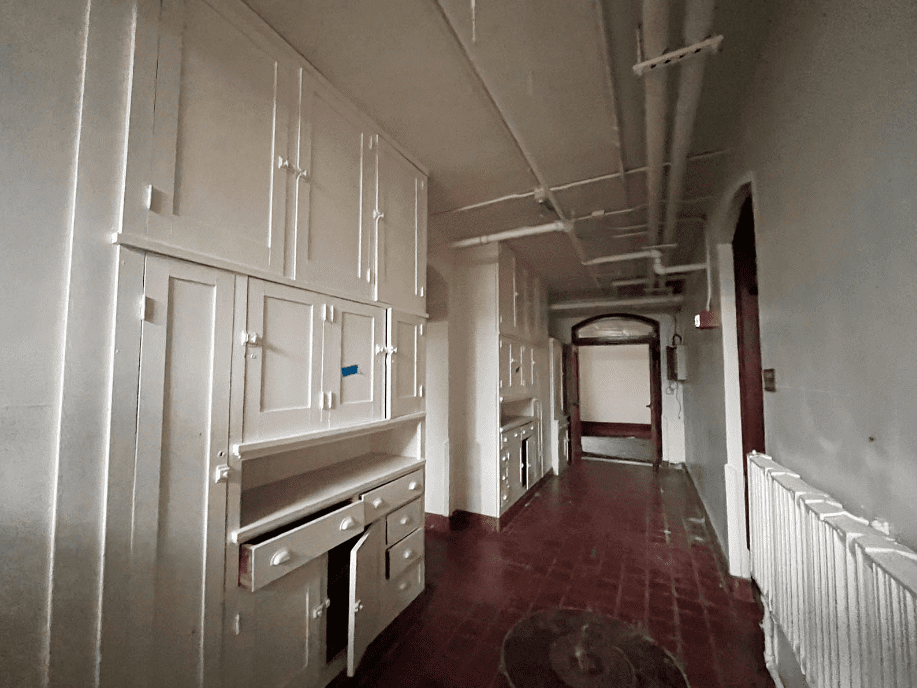
While that’s the workaday story, a more florid one goes that Friess was on her way to Watertown one day when her horse came to an unexpected halt at the site and refused to budge. This, Mother Caroline believed, was God dropping a pin on the spot.
Buying the acreage in 1856, and in the next three years the sisters established a cemetery, then a convent, an orphanage and later a school.
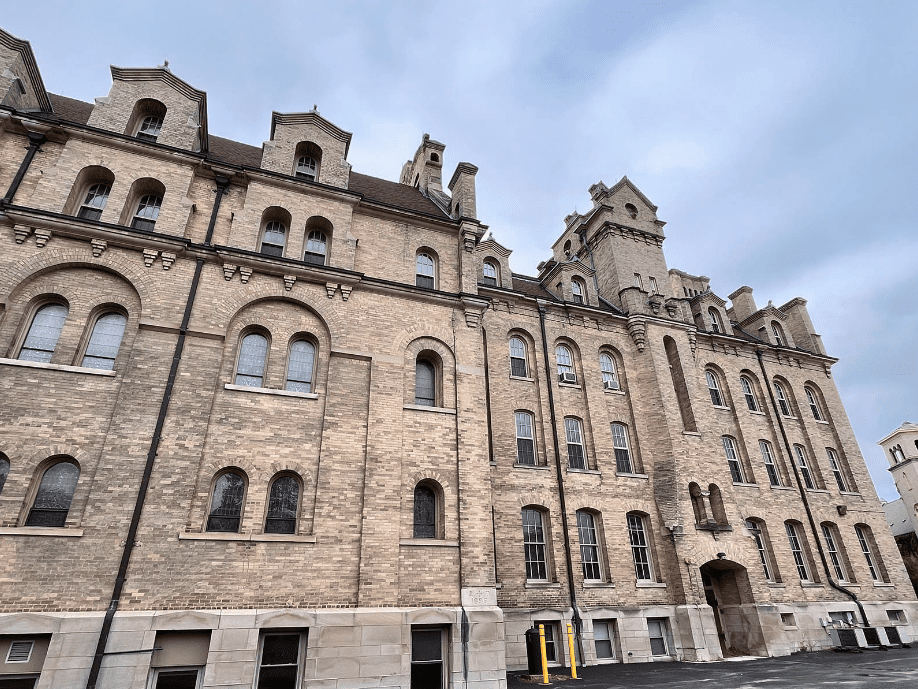
As the order grew, newer buildings were needed and thus was built the progression of structures noted above.
Born in Germany in 1866 and arriving in Milwaukee in 1883, Eugene Liebert – whose mother was a member of the Gallun Tannery family – was the perfect choice of an architect to reflect the Bavarian heritage of the order.
The year before construction began on Notre Dame Hall, Liebert had dissolved his partnership with Herman Schnetzky, with whom he’d designed a number of buildings, including the Germania Building, St. Michael’s Church and others.
Liebert’s work, while somewhat varied, always hearkened back to his German roots, as is evidenced by the German Renaissance Revival style of his building, which is the centerpiece of the site.
“The finished building fairly oozes Bavarian details and the creative use of Milwaukee’s Cream City yellow brick is worth of close study,” wrote historian H. Russell Zimmermann in his monograph on the architect.
“With its castellated skyline, stone and sheet metal trim, it certainly fulfilled (the) request,” of the Louis Mission Society in Bavaria, which donated funds toward the project.
The society – founded by King Ludwig I – had, according to Zimmermann, “requested that a ‘Bavarian-style castle-like design’ be created.”
And it is no less glorious on the inside, with multiple lovely woodwork-adorrned staircases and an eye-popping two-story chapel.
There are heavy wooden doors with impressive hardware, leaded glass windows, built-in cabinetry and more.
The complex, noted a report prepared for the campus’ 2011 listing on the National Register of Historic Places, “served the sick, disabled and handicapped of the SSND community. The combination of buildings, with the associated cemetery, stands as a testament to the need for, and school Sisters’ commitment to, continuous (and perpetual) care for its own population, whether it be physical ailment, mental infirmity, or simply old age.”
While there was a time when hundreds of sisters lived on the campus, by the time they sold it and moved in 2021 to Trinity Woods at the Mount Mary University site a few miles northeast, there were roughly 100 remaining.
Talks began in 2017 with Mandel Group, which has now begun site work on the Caroline Heights development.
As part of the project, Wauwatosa has agreed to provide municipal water service to the development in Elm Grove, which has been on well water, according to Mandel Senior Development Associate Dan Romnek.
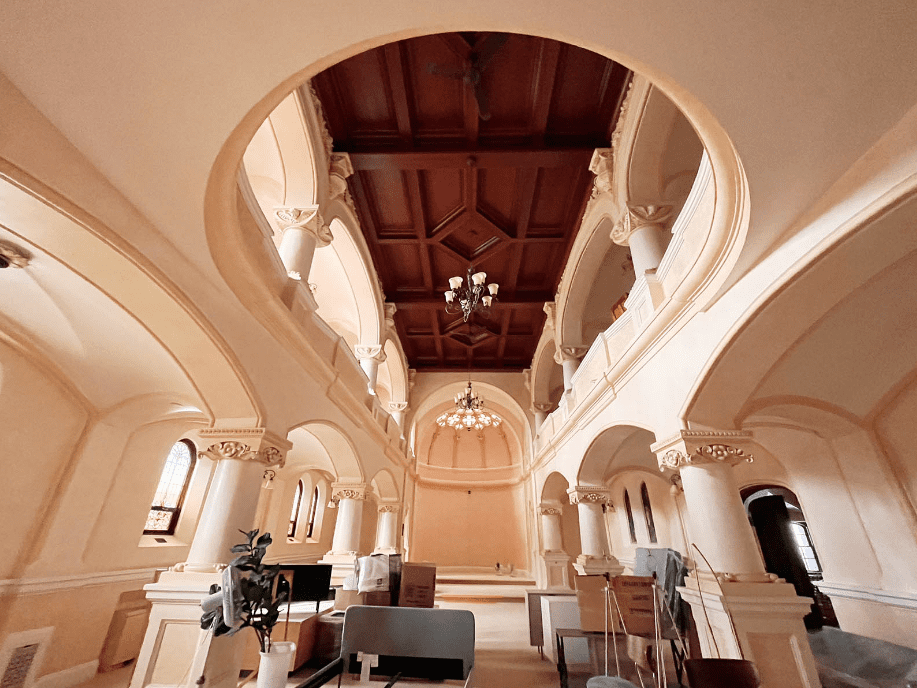
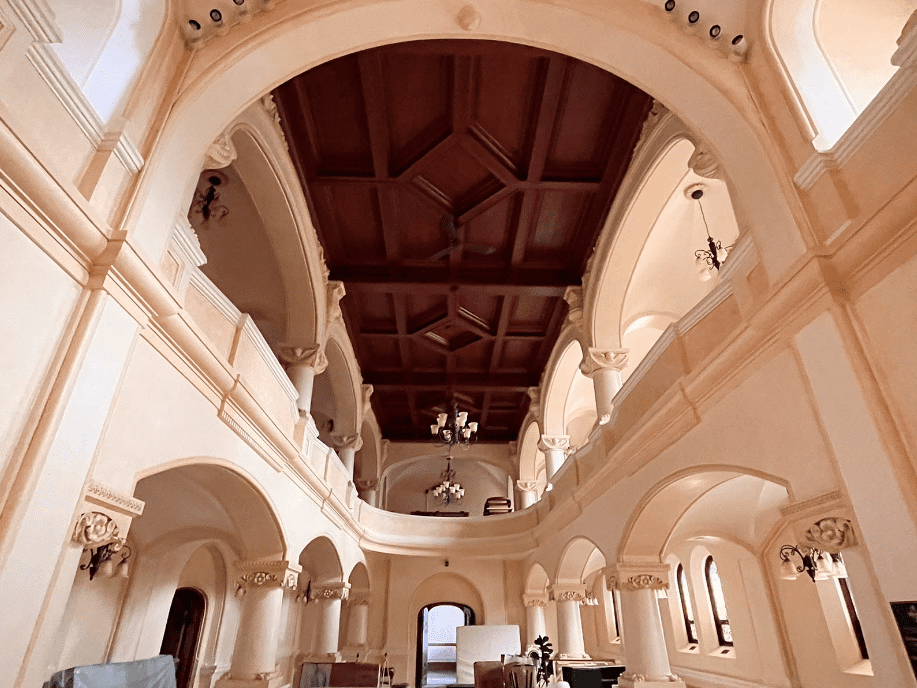
“Mandel is extending the water to the project site,” he says. “Elm Grove residents along the path will be able to connect to the water main.”
While the site is losing some trees, it will remain heavily wooded.
“You can’t recreate this,” says Romnek, as we tour the campus on foot, passing under giant maples, chestnuts and other trees. “At least not in under 100 years.”
Surface parking lots on the property will go away as 386 spaces will be tucked underground.
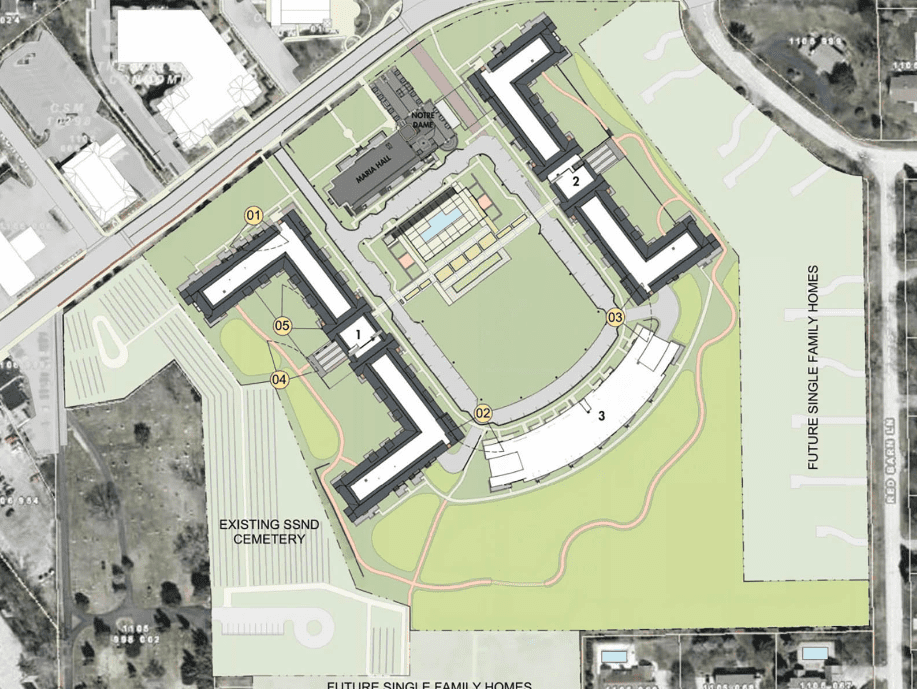
Above ground, the two most striking buildings in the campus will remain and will house apartments that will encompass many of the unique features of the buildings, including original woodwork, leaded windows, staircases, terrazzo-floored balconies and more.
“Folks who live in Elm Grove and might be looking to downsize won’t want to downsize to a 1,200-square-foot apartment, but they might be willing to do it in an almost 2,000-square-foot space,” says Romnek of the larger units in the historic buildings.
“It’s not a lot of units, but these will be unique apartments.”
Some in Maria Hall will be garden apartments with areaways that offer access via the gardens out front, for example. Another unit, in the Liebert building, will get one of the building’s entrances all to itself.
The apartments range from 826-square-foot one bedrooms to 1,751-square-foot three bedroom units. Rents will run from about $1,700 to $3,500.
The first move-ins are expected in late 2024 with final completion the following year.
While Mandel had initially planned to seek historic tax credits for the project, it determined that it made more sense to remove some of the more recent buildings and forego the credits. The grotto will also be demolished.
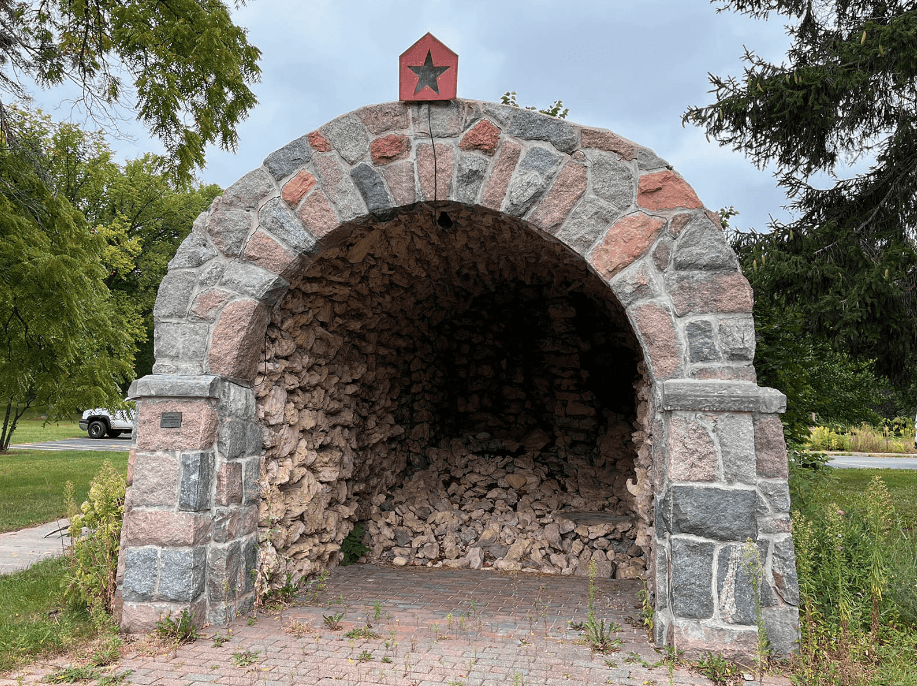
Romnek said that Mandel worked with the sisters to look into moving it but due to the nature of its construction it was work that could’ve run into seven figures, he said.
Those structures will be replaced with a pair of C-shaped buildings that will flank a large common area in the center of the site, behind the historic buildings. That “main square” will be enclosed by a semicircular building at the back.
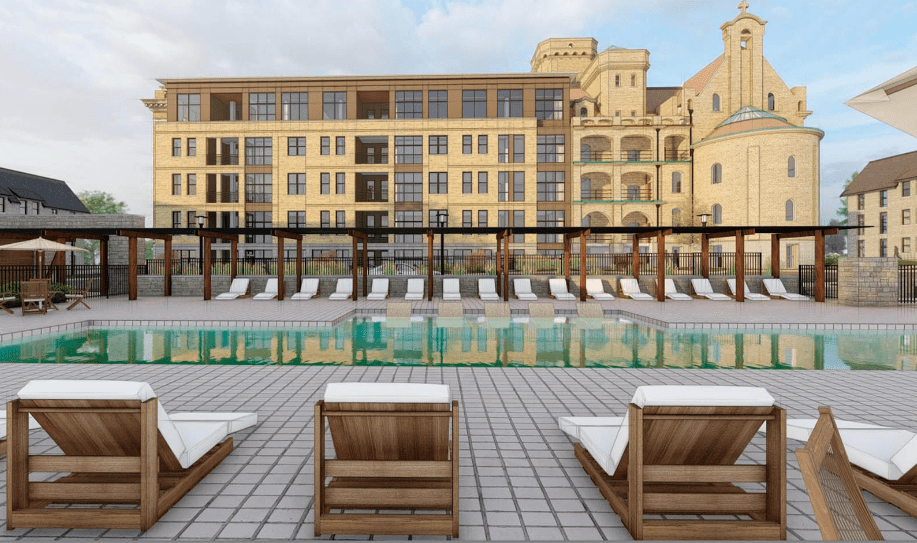
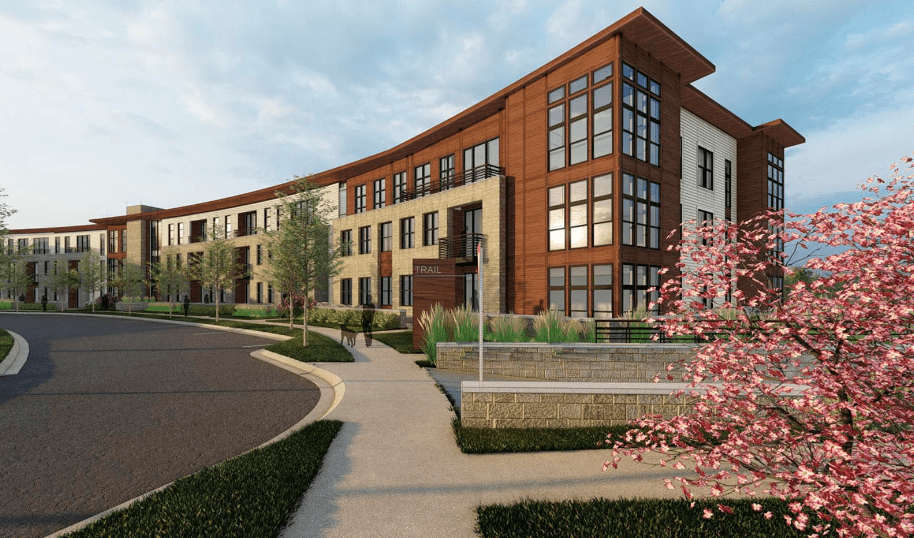
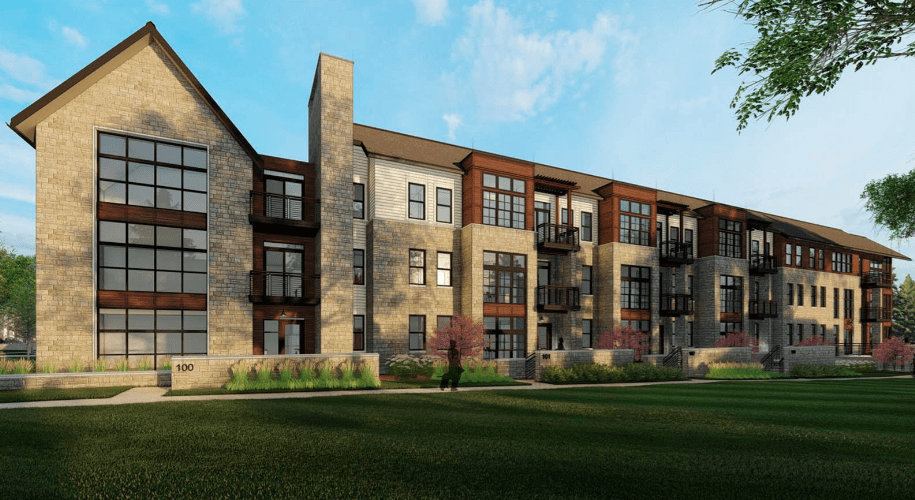
A later addition to the back of Maria Hall will be replaced.
As work was underway on tree removal outside and some demolition on the interior, Romnek showed me around.
While Maria Hall was heavily renovated inside over the years, leaving it looking fairly underwhelming – other than those large outdoor terraces in the front with terrazzo floors – the Liebert building really is a stunner.
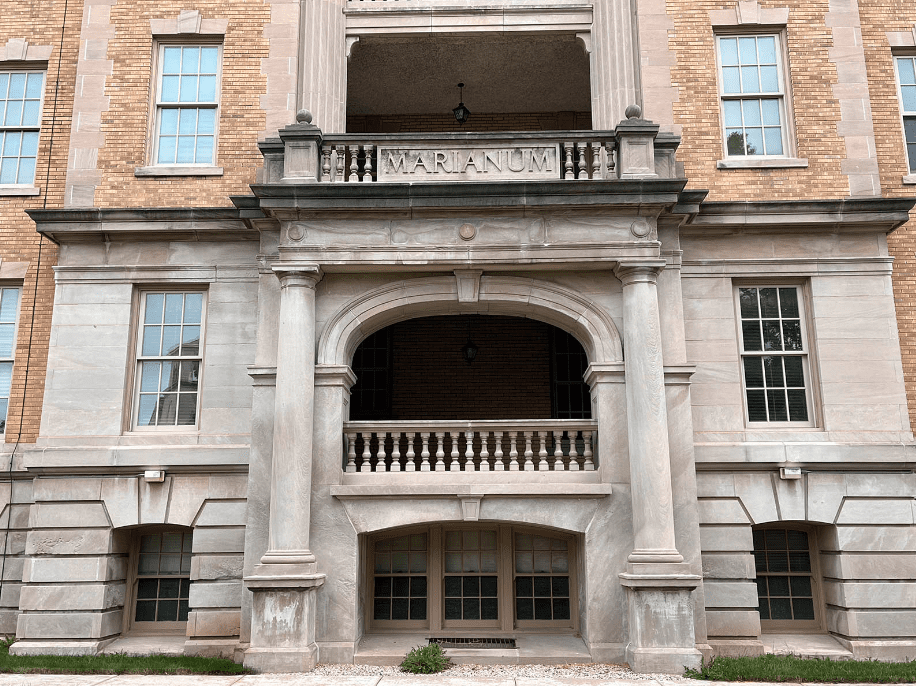
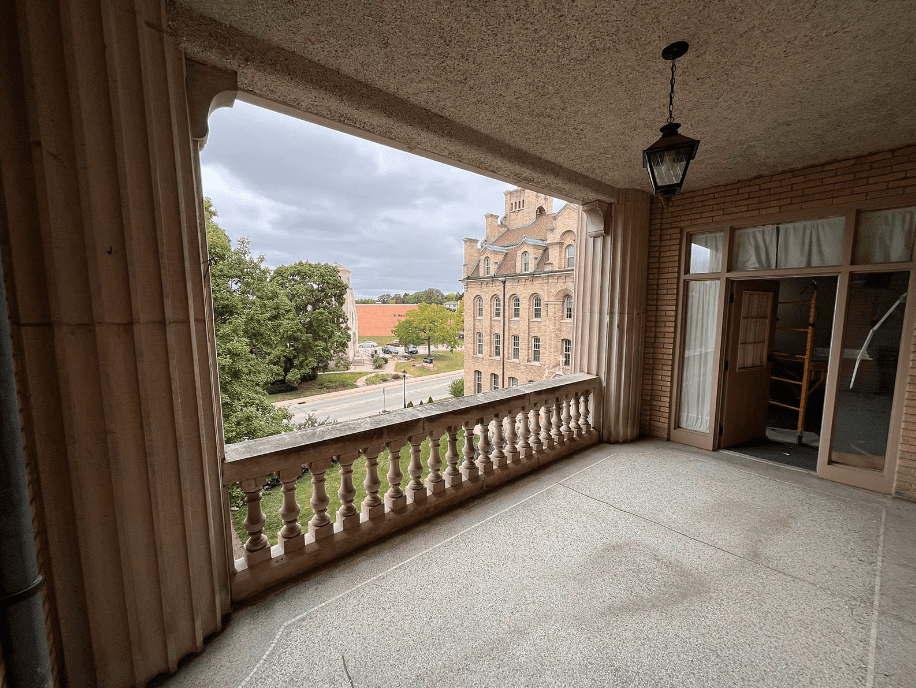
In the lower level we saw the opening – now blocked up – to a tunnel that led to a red barn on the eastern end of the property. (Stay tuned, as Romnek promised to call me or at least send photos/video when the tunnel is opened up before being filled in!)
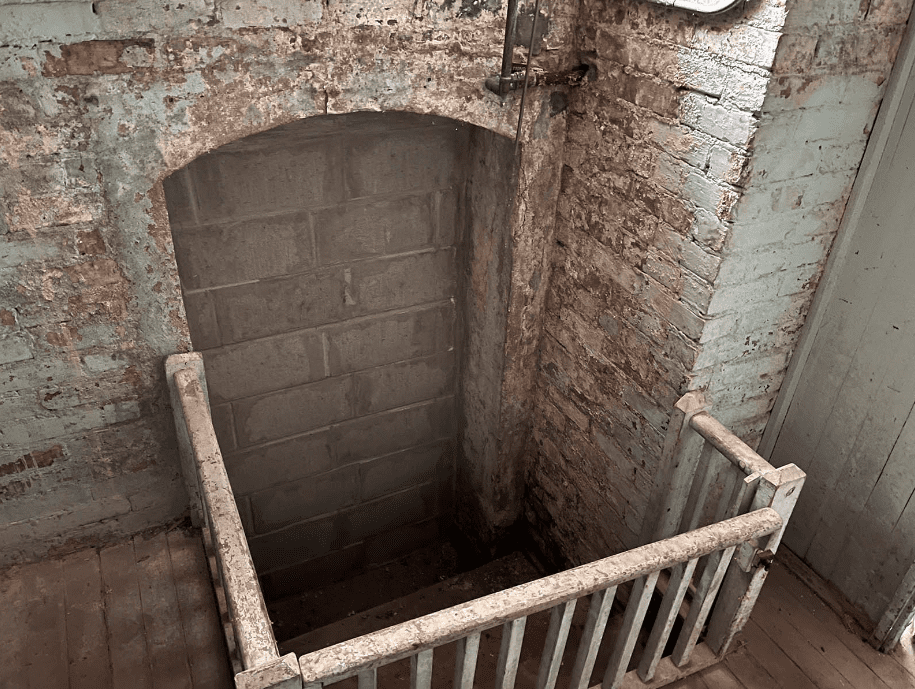
Turning a corner we came upon the bottom of the main staircase that is jaw-droppingly beautiful and wends its way all the way up to the top of the building, where it is topped with a dome skylight.
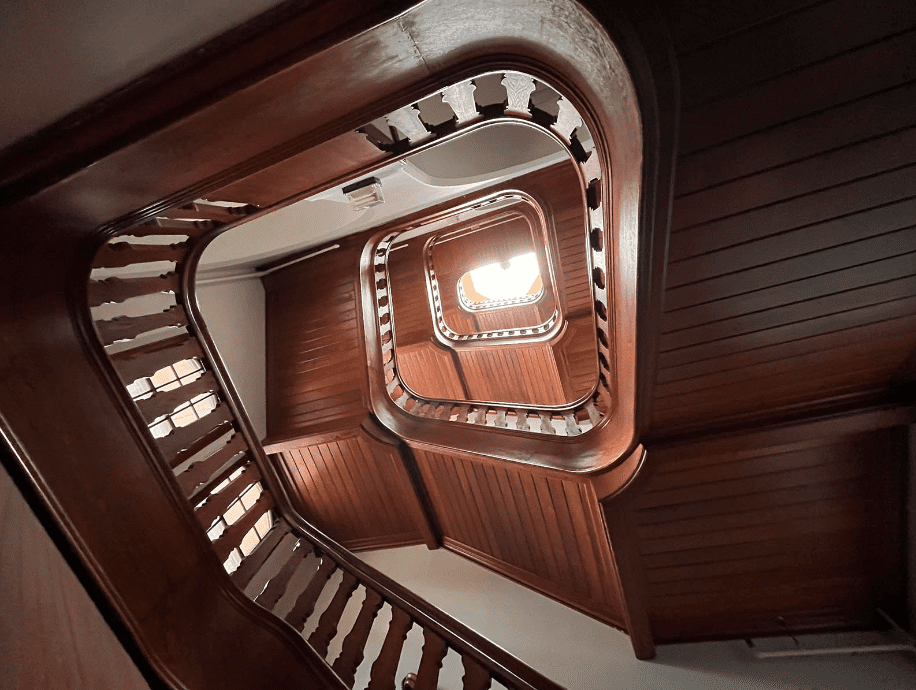
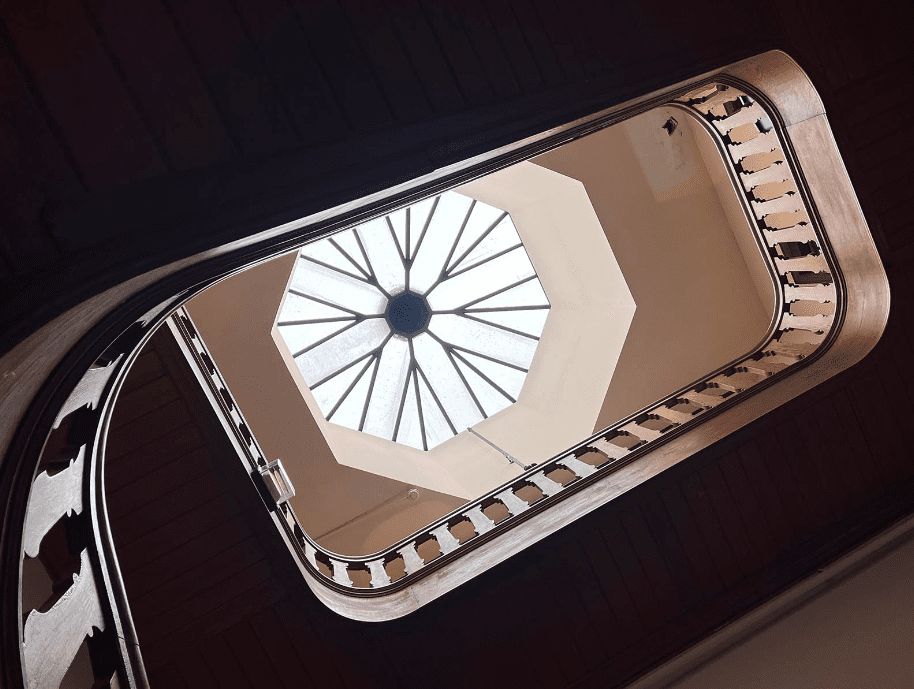
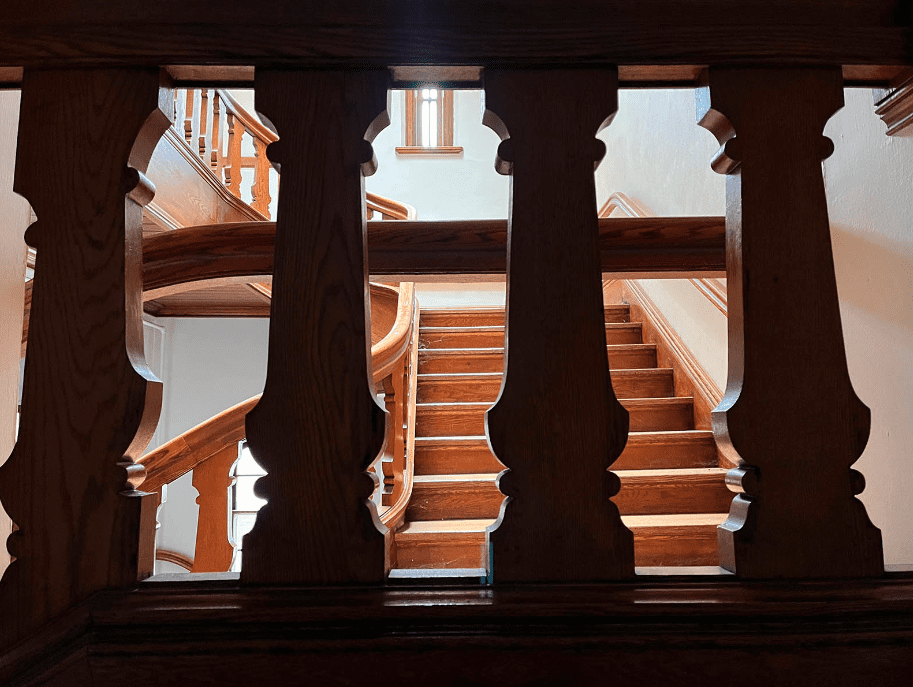
There’s another, smaller staircase, that is equally nice, albeit less dramatic in scale.
Heading upstairs, I had a similar revelation when walking into the balconied chapel, with its putti heads and floral motifs atop stout pillars, its dark wood ceiling and stained glass windows.
Black Husky Brewing owner Tim Eichinger, who was head of buildings and grounds at the complex in the 1990s, tells me, “One of the stories was that the chapel is a replica of the throne room in the Neuschwanstein castle at the request of Ludwig Prince of Bavaria.”
It surely seems plausible.
Climbing up into the attic, Romnek says that the sisters told him when there were outbreaks of illness, some of them would set up cots up here to sequester themselves and avoid getting sick.
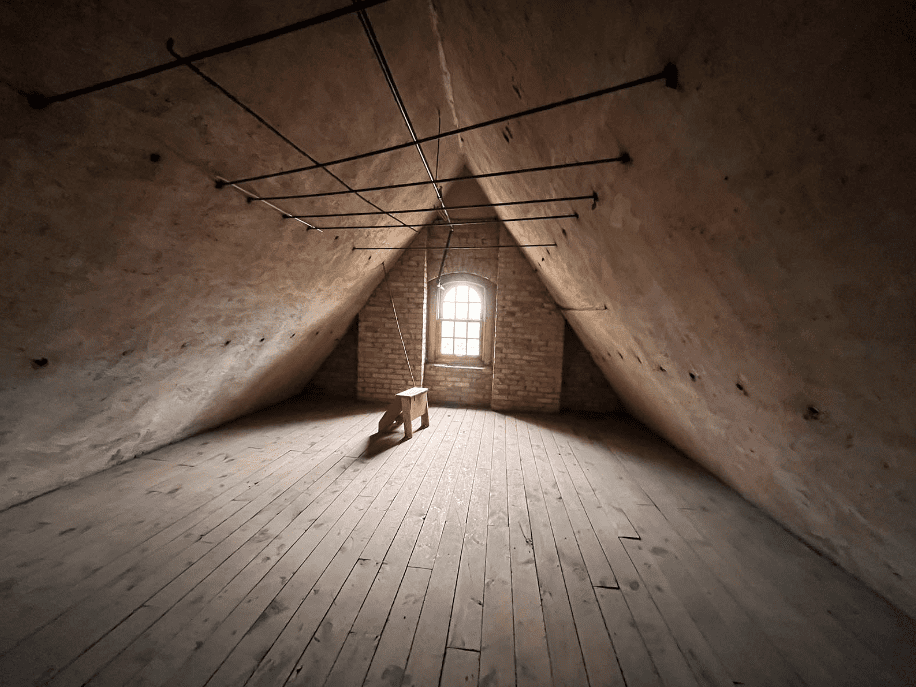
We go up another level and we’re out on the roof, where we can get close up to the many masonry details at the top of the building.
As is typically the case in buildings of this age, the brickwork is as detailed and ornate in areas that the public would never see as it is in the more visible parts of the structure.
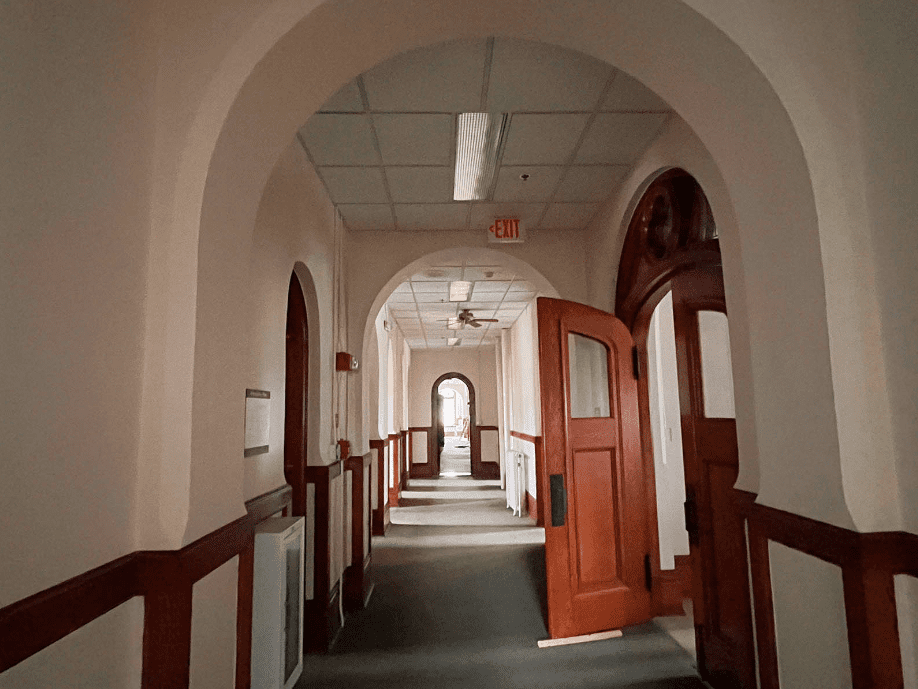
Going back in, Romnek opens a door on the landing and we’re standing in the upper levels of an old water tower that once ran the entire height of the building.
At some point, the lower parts were filled in to create usable space on the floors below.
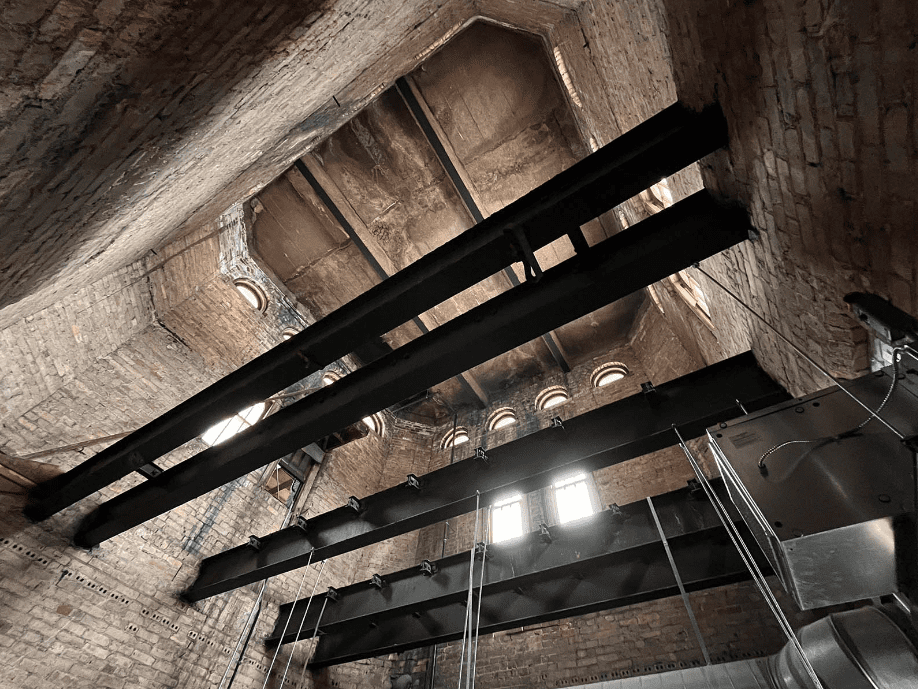
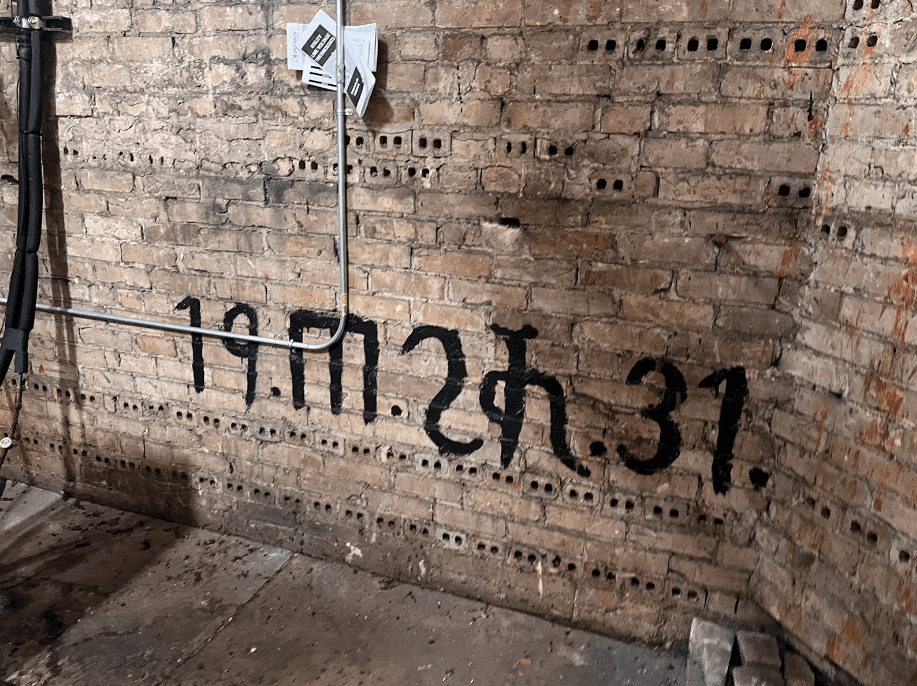
Despite the fact that the structures served as residences, most of the interior floor plans of these buildings will change and built-ins, while being saved and re-used, won’t necessarily remain in their original locations.
But those staircases will be there and the chapel will remain in place for use as a community room. Surely, one of the most impressive such rooms in any apartment complex in the area.